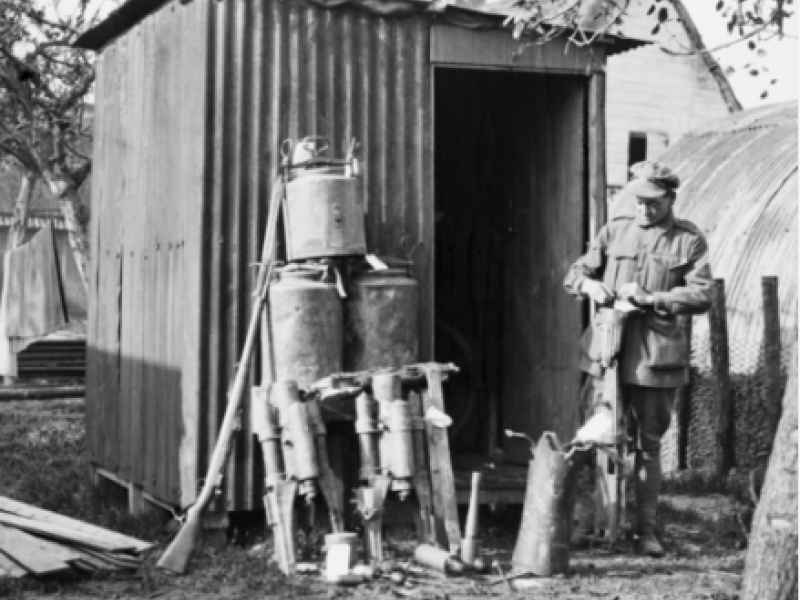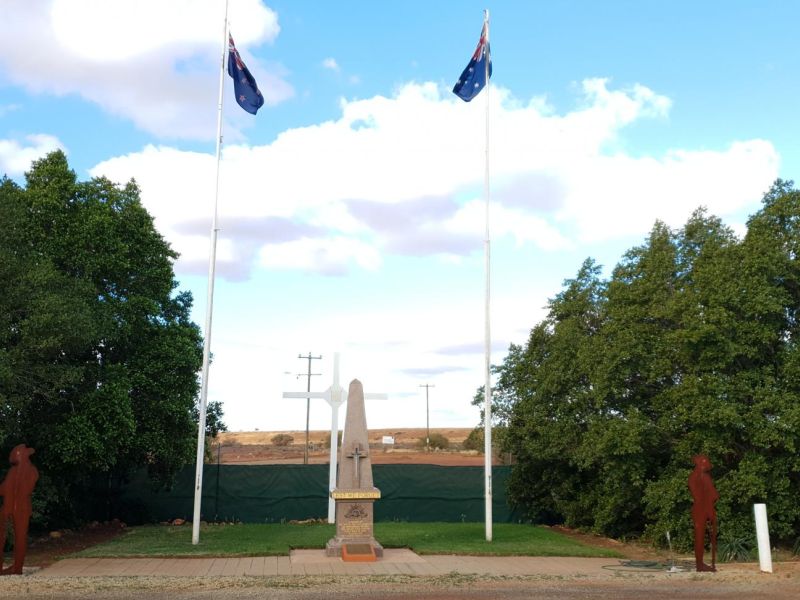Corporal Ernest Lionel Bailey, Australian Salvage Corps, AIF
Ernest Bailey was born in Sydenham, London in 1886. At 23, he emigrated to Australia and the Western Australia goldfields, where he worked as a gold assayer. He lived for some time in Meekatharra. Locals remembered him as “an Australian by adoption … a prince of good fellows, and his fine qualities made a deep impression upon those associated with him”.
Bailey enlisted in the Australian Imperial Force in August 1915 with reinforcements to the 28th Battalion. He arrived in Egypt with a bad case of influenza, going straight to hospital. He then went through several transfers, before being posted to the 51st Battalion and sent to France.
He spent the bitterly cold winter of 1916-1917 rotating in and out of the front line. In January 1917, he was transferred to the 1st Anzac Corps Salvage Section. He took leave to England and married Emily Klein in a civil ceremony on 28 August 1917.
In September, Bailey was promoted to lance corporal and detached for duty to the Australian War Records Section. This unit was created in May 1917 to acquire objects and war relics, paper records, photographs, film, and art in order to preserve a record of Australian experiences in the war. The resulting collection laid the foundation for the Australian War Memorial’s massive collection today.
Bailey was an enthusiastic member of the small team at the Museum Depot in Vignacourt, going out among units to collect items and prepare them for storage. He was promoted to corporal the following year.
On 17 May 1918, Bailey was working on German trench mortar bombs, removing traces of high explosive with a chisel, as was common practice. At 2.30pm there was an explosion. One of the German bombs had detonated and killed Bailey instantly.
The Australian Official Historian, Charles Bean, arrived on the scene soon afterwards. He wrote that Bailey:
“was a splendid man, keen and intensely trustworthy. More than any man I know he was responsible for the founding of this Australian War Museum with such a splendid series of exhibits … He will not be replaced – they will not get another man like him. The thought of his cheery smile as he came on the coldest days of the winter … makes one sick at heart for the loss of him.”
Bean paid Ernest Bailey a magnificent tribute, writing that:
“the great Australian War Museum, when it finally stands in the Australian capital, will be a monument to him; for it is his work that thousands upon thousands of Australians will see as they walk down those galleries.”
Corporal Ernest Lionel Bailey was buried in the nearby Vignacourt British Cemetery, where he lies under the epitaph chosen by his wife, “to live in hearts we leave behind is not to die”. He was 32 years old.
Meleah Hampton, Historian, Military History Section
Image: Corporal Ernest Lionel Bailey, 51st Battalion and later Australian Corps Salvage AIF, tagging battlefield trophies for the Australian War Museum at the Hoograaf Collecting Depot.
- Australian War Memorial https://www.awm.gov.au/collection/C2278449

 Australian War Memorial
Australian War Memorial